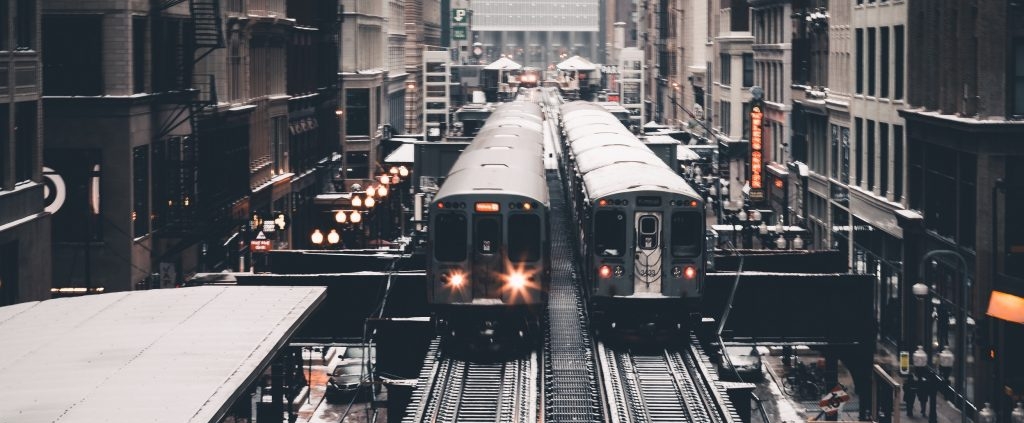
Latest Train Collision in S. Carolina Asks Hard Questions
When a train crashes, many officials and organizations point fingers, trying to allay suspicion or lay the blame at someone else’s door.
But there’s one party we can be sure is innocent of causing the accident: the train’s passengers. Sadly, they’re the ones who usually suffer the most when these disastrous events occur. The recent crash in South Carolina is the latest example—and it’s also the third fatal Amtrak collision in under two months.
In fact, in the last few years, Amtrak has self-reported an average of two derailments per month. These statistics do not do justice to the horror that passengers experienced—the bone-shaking impact, the smoke and confusion, and the fear of never seeing loved ones again.
How have trains become so dangerous? And what is our Nation doing to stop it?
What Happened?
The Amtrak collision in South Carolina on February 4, 2018, occurred only 5 miles southwest of the state capital, Columbia. Two people, a conductor and an engineer were killed. At least 116 more were injured, two left in critical condition in the hospital.
Amtrak has come out swinging, blaming CSX, a leading railroad supplier and track operator based in Jacksonville, Florida. According to The New York Times, CSX dispatchers were routing trains because a signal system was down, and had padlocked one switch, which shunted the New York-to-Miami Amtrak Train 91 onto a side track, where it crashed into a parked CSX freight train loaded with automobiles.
And the train wasn’t speeding. National Transportation Safety Board (NTSB) chairman Robert Sumwalt said the train’s recovered recorder showed that seven seconds before the crash, the train was moving at 56 mph. Four seconds before, the train’s throttle idled while moving at 54 mph. (The track speed limit is 59 mph.) NTSB also conducted interviews with witnesses at the scene who confirmed the details.
Can These Train Accidents Be Prevented?
Yes. Officials and experts already determined that the recent Amtrak accidents could have been avoided with “positive train control” (PTC), a technology developed by Union Pacific Railroad in the 1990s. In 2008, Congress approved the Rail Safety Improvement Act, which among other things mandated this GPS-based system on all tracks that carry passenger trains by 2015. (These are known as Class I railroads.) However, Congress extended the deadline to December 31, 2018, with the possibility of a further extension to December 31, 2020, if a railroad petitions for an extension and meets certain requirements.
Overall, the Chicago Tribune reports that “freight railroads have implemented PTC on 56% of required route miles.” Several major railroads are expected to request the extension yet again at the end of 2018.
According to the Federal Railroad Administration’s latest estimates, CSX has spent $1.2 billion and installed positive train control in 100% of locomotives; Amtrak in only 71%. Though CSX’s “locked switch” may have been the cause of this particular accident, Amtrak could possibly have avoided it by having PTC on the train.
Though implementing PTC in all trains will cost billions of dollars, the cost of not implementing it has already been far worse. When properly installed and integrated, PTC should prevent:
- Train-on-train crashes
- Derailments caused by speeding
- Passage through misaligned track switches
- Unauthorized entry into work zones
- Any other specified instructions.
This latest tragedy has led to a renewed clamor for positive train control. Members of Congress, like U.S. Representative Sean Patrick Maloney of New York, say that “time’s up” on delays—2018 “has to be a hard, legal deadline for all passenger railroads to implement PTC.”
Our team of personal injury lawyers here at Rhine Law Firm, P.C., couldn’t agree more. Our thoughts are with the families who have been affected by this tragedy, and we wish them speedy justice.
About Us
Rhine Law Firm, P.C. serves clients throughout North Carolina and nationwide, specializing in complex civil litigation led by Joel Rhine. With expertise in personal injury, car accidents, property damage, sex abuse, and more, the firm is passionate about taking on challenging cases. They emphasize providing personalized legal representation, prioritizing their clients’ best interests while offering state-of-the-art legal strategies. Rhine Law Firm’s dedicated attorneys enjoy the fight for justice and are committed to guiding clients through complicated legal processes. The firm offers free consultations, flexible appointment scheduling, and Spanish language services.




